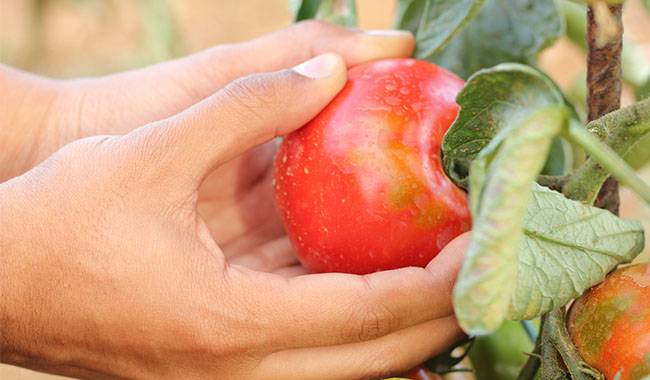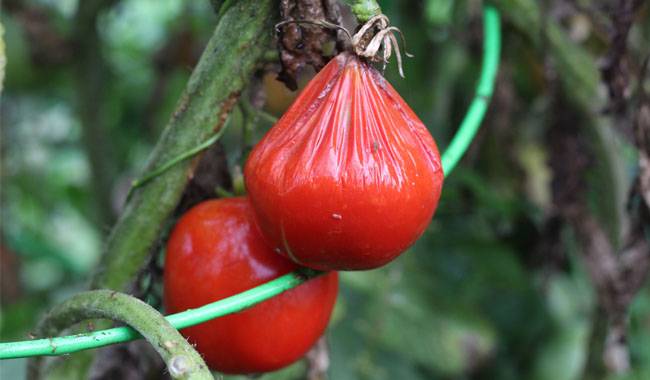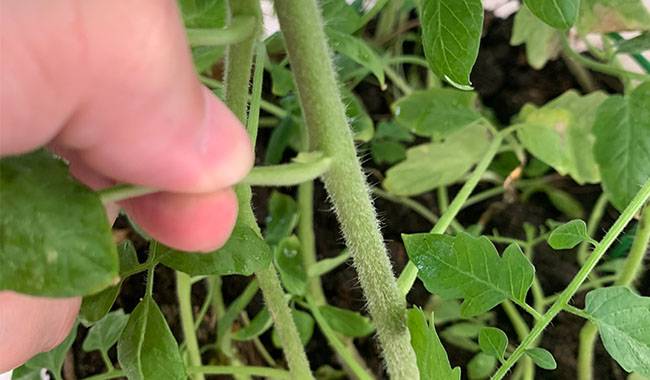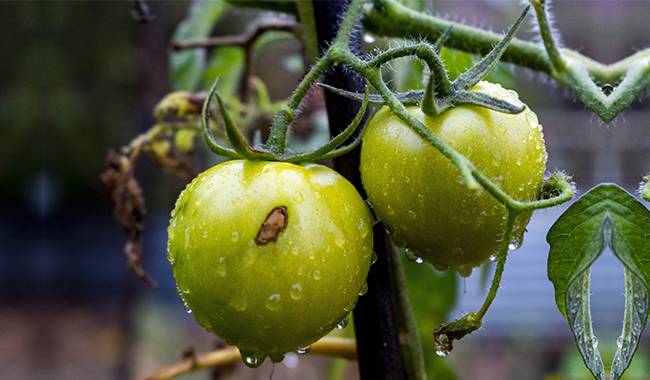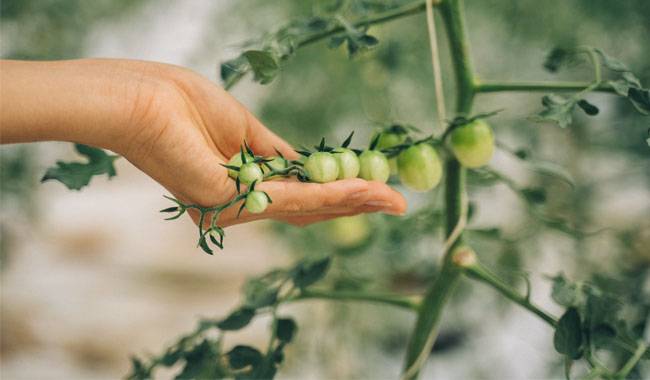
In this publication, we provide the reader with a complete tomato plant care calendar by month.
Of course, it is important to know that the main periods. Flowering, ovary formation and ripening, may depend on the variety of tomatoes. As well as on the climatic characteristics of the region and the conditions of the current season.
They may come earlier or later than indicated here. This is completely normal, and you should take care of the plant accordingly for tomato plants.
TOMATO PLANT CARE IN MAY
Planting tomato seedlings
Everything starts with planting tomato seedlings on the plot. It usually starts in mid of May. Although everything depends on the climatic conditions in your area and the time of spring, a term that can shift in one direction or the other.
What is common to all regions is that tomatoes grow best when temperatures reach about 59°F (15°C) above zero and do not fall below that.
Before planting tomato seedlings in a fixed location, they should be watered sufficiently to make it possible to remove the plants from the nursery container without damaging the soil.
Next, while preparing tomato seedlings for planting, the soil in the seedling cups needs to be water-soaked for planting. The soil should be well loosened and planting holes should be dug to the size of the seedlings.
The holes should be watered and a teaspoon of wood ash should be poured into each hole. The soil containing the tomato seedlings should then be placed in the holes and the soil compacted with the fingers. If necessary, soil can be added to the holes.
After the tomato seedlings are planted, they should be shaded during midday hours for a week to protect them from bright light.
Planting should be done near the evening or on cloudy days. Plant tomatoes in rows 25inch (70 cm) apart, leaving 15inch (40 cm) between tomatoes.
Watering tomatoes
Watering in May should be done frequently without letting the soil dry out, also without over-watering the soil. Plants should be watered in the evening when it is not too hot, with emphasis on the weather.
Therefore, if it rains heavily during the day, you do not need to water, and if the weather is dry, you should water the seedlings by all means. You can water them daily and only until the soil is moistened by 2-4inch (5-10cm).
Loosening up
It is absolutely necessary to loosen the soil after heavy rain or the day after watering. Loosening prevents the formation of a dense soil crust that prevents proper air and water exchange.
Usually, the depth of loosening is 5-6inch (13-15 cm) within a week after planting tomatoes, after five days it decreases to 4-4.5inch (10-11 cm) and at the end of the month – to 1-2inch (4-5 cm).
The depth of loosening depends on the degree of development of the tomato root system, which, as a rule, at the beginning of the month, is still underdeveloped, and at the end of the month it is developed to the extreme.
Tomato weed control
Soil thinning can be combined with weed control. Weeds should be removed manually, uprooting as many as possible. Manual weed removal reduces the number of weeding operations.
Tomato mulching
Mulching is usually done at the end of irrigation and after weeds have been removed. You can cover the soil occupied by the tomatoes with a layer of humus several inches thick or with grass clippings. Mulching will conserve water, suppress weed growth, and eliminate the need for frequent loosening of the soil.
Fertilize tomatoes
In May, near the end of the month, you can fertilize your tomatoes with the elements most important to their development. It is best to use it diluted in water.
Usually, the plants are given ammonium nitrate (13 grams per bucket of water, rate per square meter of soil), calcium superphosphate (due to its poor solubility, it is best to apply it in dry form on loose and well-moistened soil at a rate of 20 grams per square meter), and potassium sulfate (15 grams per bucket of water, rate per square meter of soil).
TOMATO PLANT CARE IN JUNE
By the beginning of June, the tomato seedlings planted in May will be well-rooted. During this month, the laying of the harvest takes place, so all agricultural techniques need to be carried out with special care.
Watering of tomatoes
Watering in June must be done in the evening, pouring water below the roots. Tomato plants can be watered every 2-3 days in June, as by this time they must have acquired a fully developed root system.
One bucket of water per square meter is enough. In addition, you must be guided by the weather; if it is cool and wet, you can stop watering.
Fertilizer
Throughout June, you can fertilize your tomatoes in four different ways, which means about once a week. It is best to use a compound fertilizer diluted in water, for example, nitroaminophosca – one teaspoon per 10 liters of water, which is the standard for 1 square meter.
Stimulate pollination
During flowering, usually at the end of the month (or possibly earlier), carry out a pollination procedure that stimulates this culture. Gently shake the tomato plant to stimulate pollination. Plants can also be treated with a 1% solution of boric acid. It is allowed to treat flowers with a 0.005 percent solution of 30 percent sodium humate.
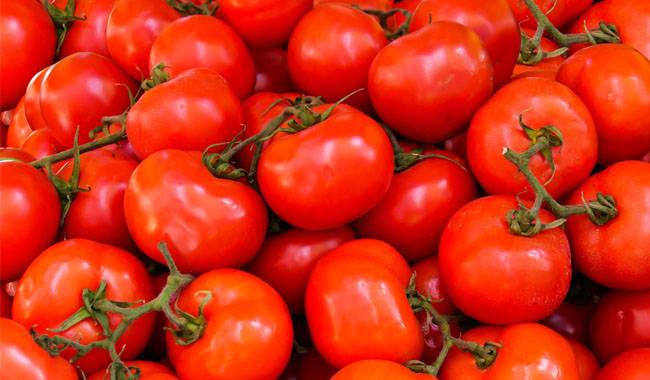
TOMATO PLANT CARE IN JULY
In July, the plants usually finish flowering, during which you also need to water and feed the plants.
Tomato watering
Tomato plants should be watered less frequently than in June. Generally, tomato plants are watered every 15 days, so you can hold two full watering events in July, with a little more than two buckets of water per plant. It is important to water at night and to use room temperature water.
Loose
In July, it is important to continue loosening the soil under the tomatoes after rain or the day after watering to break up soil slabs.
Mulch
You can continue to mulch the soil with humus or grass clippings.
Tomato fertilization
Fertilize your tomatoes only a few times during July. The first one is best done at the beginning of the month. During this period, the plants can be fed with diluted nitroglycerin – two teaspoons per 10 liters of water – which is the standard per 1 square meter.
The second feeding is best done at the time of fruit ripening. Tomatoes are best sprinkled with potassium sulfate during this period (15 grams per bucket of water, wetting the plants well) and calcium superphosphate is made in the soil – 12 grams per square meter in the soil previously loosened and watered.
Lighten the load of tomatoes
In July, you need to weed the tomatoes – remove the axillary buds of the lateral branches, which will stimulate the flow of nutrients to the fruit, increase its weight, improve the taste and accelerate ripening.
You can pull out the stems when they are 2inch (5cm) long. It is best to remove the stems in the morning when the shoots are saturated with water (they are more fragile then). As for tree holes and weaker growing varieties, steps can be used without them.
Shaping tomatoes
Determinate tomato varieties should form two to three stems, leaving a few flower buds. Indeterminate varieties should form in one stem.
Eliminate growth points
At the end of the month, you need to break out all growth points on buds and new flowers, as well as all yellowing leaves.
TOMATO PLANT CARE IN AUGUST
The main tasks during this month are to provide adequate nutrition and water to the plants, to protect them from phylloxera, and to accelerate ripening and harvesting.
Watering tomatoes
Watering this month is mandatory and does not allow the soil to dry out. If you allow the soil to dry out, water finely and gradually moistens the soil. If you water tomatoes with a lot of water immediately after a drought, the fruit will start to crack.
Nutrition of tomatoes
In August, it is recommended to fertilize tomatoes with a fertilizer diluted with pure water. This is the time when potassium fertilizer is most important for tomato plants and fruits. If you grow with wood ash, you can do without reusing it – just feed your tomatoes with potassium sulfate dissolved in 10 liters of water – 12 grams per 1 square meter.
If you don’t make wood ash, you can also dilute it with 10 liters of water – 250 grams, which is enough for 1 square meter, and feed with the above amount of potassium sulfate after 4-5 days.
Due to lack of nitrogen, tomatoes have lighter leaves, you need to remedy this urgently by dissolving a tablespoon of urea in a bucket of water and treating the tomato plants in the evening, wetting all above-ground parts.
If the tomato leaves have turned an unnatural purple-purple color, then you need to make calcium superphosphate dissolved in water. It is necessary to dissolve a tablespoon of calcium superphosphate in a bucket of water and treat as many above-ground parts of the plant as possible with this solution.
Protection of tomatoes from Late Blight
In August, Late Blight often strikes tomatoes. A fungicide can be used to prevent this infection, but if it is less than a week before harvest, it is best to harvest and allow them to ripen. No fungicide treatments are allowed during this time.
Remove any excess inflorescences
In August, flowers may reappear on individual tomato plants and should be removed, as the tomatoes in them will certainly no longer have time to ripen.
Harvesting
Before harvesting, it is important to decide for yourself the purpose of harvesting tomatoes: whether to store them for a while or to eat them immediately.
You should know that tomatoes ripen in stages: first, they ripen milky white, then they blanch, and finally, they fully ripen. Once the tomatoes have reached the typical size of the variety and have reached milky ripeness, they are ready to be harvested.
Milky ripeness means that the tomatoes are not fully ripe but have the typical size and weight of the tomato variety. The skin may be creamy white (pinkish skin). At this stage, tomatoes are usually harvested for storage for about 14-16 days and then ripened during this time.
In the blanched ripened state, tomatoes have a pinkish skin color and will acquire their full color after 7-8 days. If you want to eat tomatoes immediately, they should be fully colored at the time of harvest, which is typical for this variety.
Harvesting every 6 days in the beginning and every 4 days at the peak of the crop is appropriate. When harvesting tomatoes, it is important not to delay and to harvest when the fruit is ripe. Leaving fully ripe fruit on the plant will slow the ripening of tomatoes that are not yet fully ripe.
If you want your tomatoes to last as long as possible, be sure to pick them without tearing off the stalks. So, now you know the full schedule for caring for tomatoes. Of course, you should know that the main periods – flowering, ovary formation, ripening – may depend on the variety, as well as on the climatic characteristics of the region and the conditions of the current season.
They can come earlier or later than here. This is normal, and you should take care of the plant accordingly.




